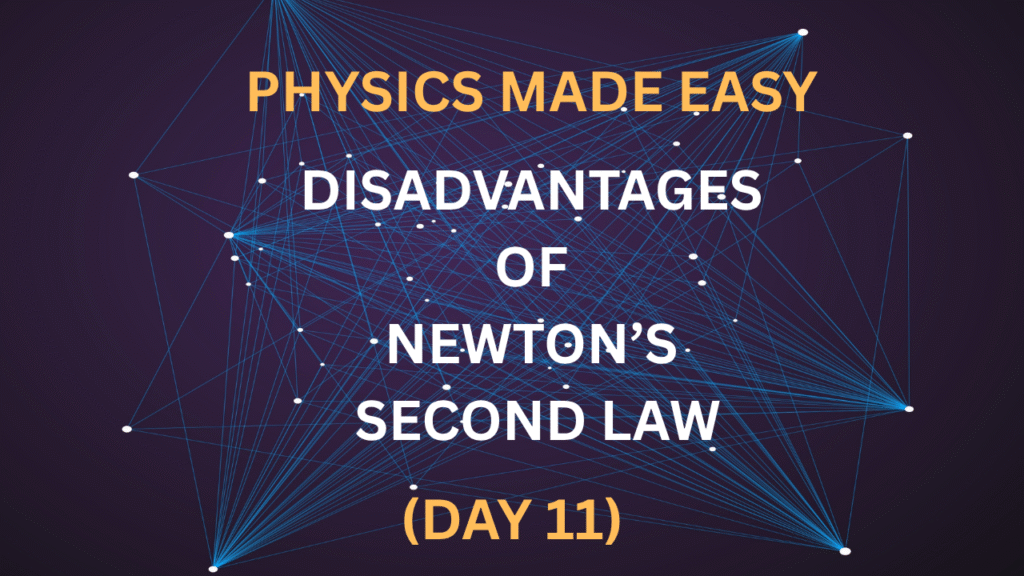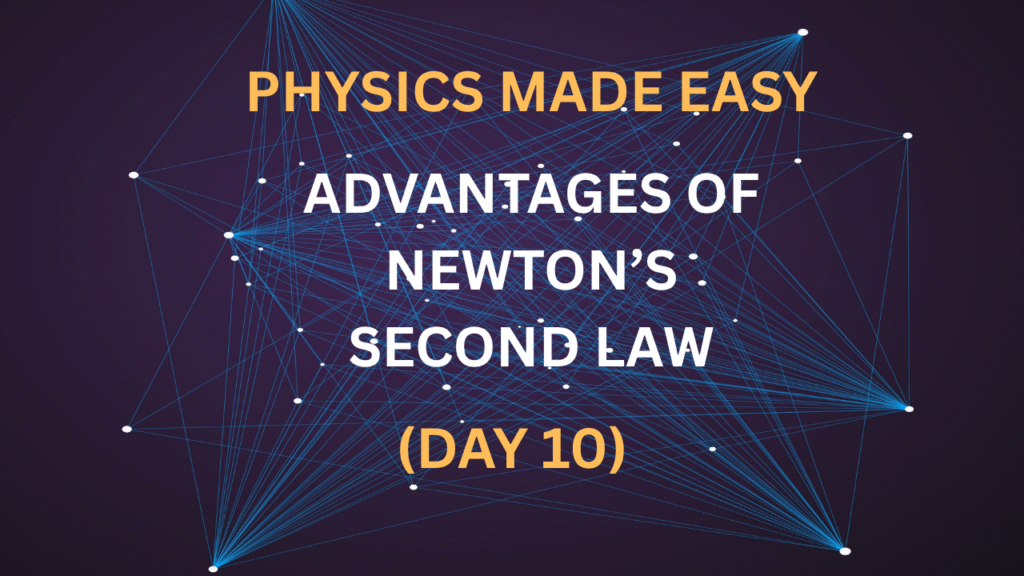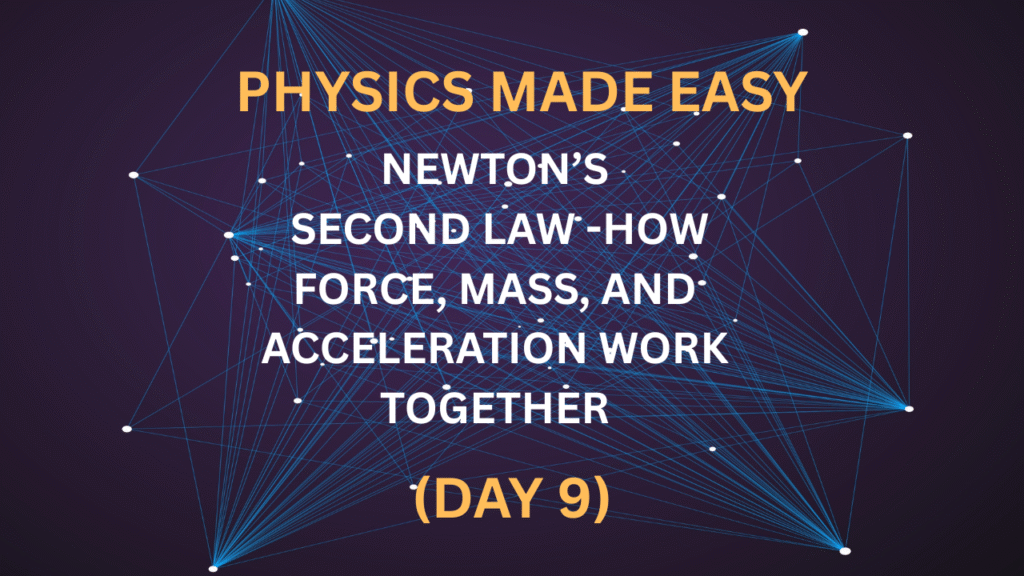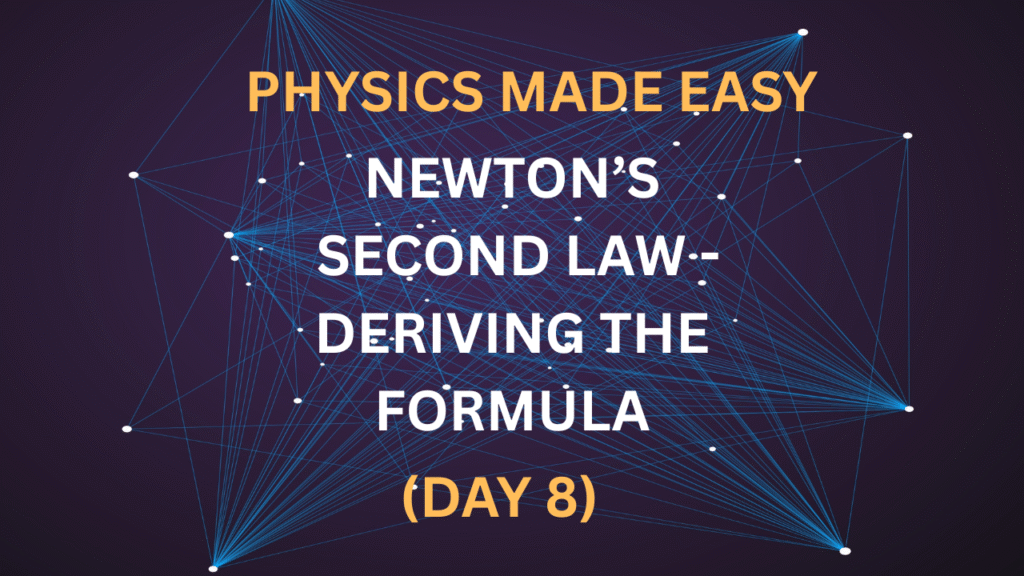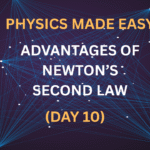🤔 Are There Any Downsides?
Newton’s Second Law of Motion — F = m × a — is incredibly useful. But like any theory, it also has its limitations. Let’s look at where it falls short:
🔸 1. Only Works When Mass is Constant
Newton’s law assumes that the mass stays the same.
🧪 Example:
In real-life situations like rockets launching into space, fuel burns up, so the rocket’s mass decreases. Newton’s law doesn’t fully capture this change in mass.
🔸 2. Not Accurate at Very High Speeds
When objects move at speeds close to the speed of light, this law breaks down.
🧪 Example:
Scientists use Einstein’s theory of relativity for fast-moving particles instead of Newton’s laws.
🔸 3. Doesn’t Apply at the Microscopic Level
Newton’s law can’t explain the behavior of tiny particles like atoms and electrons.
🧪 Example:
We need quantum mechanics to understand subatomic particles, where different laws of motion come into play.
🔸 4. Ignores Air Resistance and Friction
In textbooks, we often assume perfect conditions — no air resistance or friction — but in the real world, those forces matter.
🧪 Example:
When you throw a ball, its speed slows due to air drag and friction — factors Newton’s law simplifies or ignores.
🔸 5. Requires Measurable External Force
Newton’s law assumes that all forces acting on the object can be measured directly.
🧪 Example:
In complex environments, like turbulent water or strong magnetic fields, measuring all forces can be extremely difficult.
⚠️ Summary of Disadvantages
| Limitation | Real-Life Impact |
|---|---|
| Assumes constant mass | Doesn’t fully explain rocket motion |
| Fails at very high speeds | Relativity is needed |
| Not valid at microscopic level | Quantum physics takes over |
| Ignores real-world factors | Air drag & friction often ignored |
| Needs measurable forces | Hard to apply in complex settings |
🎯 Summary
Newton’s Second Law is a powerful and practical law that helps us describe everyday motion. However, its disadvantages remind us that nature is often more complex — especially at extreme scales, speeds, or conditions. Understanding these limitations helps us appreciate where and when we need to go beyond classical physics.
💡 Ready to Go Deeper?
Next time you look at a rocket launch, a racing car, or tiny particles under a microscope — remember that different physics laws come into play. Tell us in the comments where you’d like to explore more advanced physics concepts!
Physics Made Easy: Disadvantages of Newton’s Second Law (Day 11)
🤔 Are…
✅ Physics Made Easy: Advantages of Newton’s Second Law (Day 10)
🌟 Why…
⚙️ Physics Made Easy: How Force, Mass, and Acceleration Work Together (Day 9)
🔄 The…
Physics Made Easy: Newton’s Second Law – Deriving the Formula (Day 8)
🔬 What…
Physics Made Easy: Newton’s Second Law (Day 6)
Introduction Have…
Physics Made Easy: Disadvantages of Newton’s First Law (Day 5)
What Are…

